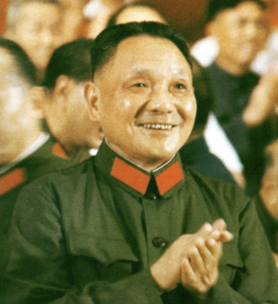Dear Reader,
At the company's annual "Investor Day" event last month in Austin, Texas, Colin Campbell, an executive in Tesla’s powertrain division, made the somewhat shocking announcement that his design team would be removing all rare earth magnets from Tesla’s electric motors at some point in the near future.
Rare earths are 17 metallic elements, a handful of which are used extensively in modern electronics.

Neodymium in particular is known for its powerful magnetic properties and is often combined with dysprosium, terbium, and praseodymium to create some of the world’s most powerful magnets.
Since magnets are an essential component of electric motors, the decision to remove rare earths entirely from the formula is not something that management took lightly, but the reasons behind it were compelling.
The main drive behind this effort can be boiled down to supply chain issues — specifically, a near monopoly on the elements held by one politically hostile foreign power.
For years now, writers in the tech, geology, and investment spaces have been wearing out their keyboards on the topic of Western dependence on the Chinese for their rare earth elements (REEs).
China's "Saudi Arabia" Moment Is Here
At the moment, China produces 90% of the world’s magnets — a $10 billion-a-year industry.
On its own, it’s minor. Our Coast Guard eats up 30% more than that and is by far the smallest branch of the military.
However, those rare earths are used in a wide spectrum of consumer products, whose sales total somewhere between $2 trillion and $3 trillion per year.
It’s a huge amount of influence, and that’s precisely how it was planned.
More than 30 years ago, Chinese premier Deng Xiaoping declared that rare earths would one day be the Chinese equivalent of Saudi oil, and though the comparison is glib at best, his vision was realized.

Unfortunately for the free world, the Chinese grip on REE production went much further than the Saudi dominance of the fossil fuel markets.
Unlike Saudi Arabia, which never controlled more than 40% of global oil supply, China has a near monopoly not just on rare earth metals, but also on other elements essential to modern technology.
Lithium, for example, which currently accounts for between 95% and 99% of the rechargeable battery market, is another long-term Chinese project.
Join Wealth Daily today for FREE. We’ll keep you on top of all the hottest investment ideas before they hit Wall Street. Become a member today, and get our latest free report: “How to Make Your Fortune in Stocks”The Best Free Investment You’ll Ever Make
It contains full details on why dividends are an amazing tool for growing your wealth.
Rare Earths Are Only Part of the Problem
Today, the Chinese own the entire production chain from mining exploration, all the way to battery production and sales. Their monopoly is so complete that Tesla — the very same company that made a big deal out of removing Chinese REEs from their magnets — still buys its lithium-ion battery packs from CATL, one of China’s biggest battery-makers.
It shouldn’t come as a shock that Tesla isn’t the only company swearing off troublesome elements.
Some companies, in fact, are building entire business models around not being involved with Chinese suppliers in any way.
The most promising of these companies has found a way of doing something that Tesla engineers can only dream of: creating a battery that uses no lithium whatsoever.
These batteries replace the lithium cathode with a cathode made of one of the most advanced materials known to man…
Graphene.
A one-molecule-thick nanostructure, this material is created in the company’s own production facility based in Brisbane, Australia.
There is no mining, there is no refining, there is no shipping. Everything is done in-house, and the results are spectacular.
A Quantum Leap in Battery Tech… and It Could Be in Your Hands Next Year
The new batteries, on top of being 100% lithium-free, have twice the charge capacity, up to three times the life span in terms of charge/discharge cycles, and up to 70 times the charge speed.
I hope that last detail raised an eyebrow, because it alone is world-altering.
The biggest obstacle faced by prospective first-time EV buyers is charge delay.
With this new graphene battery, an electric vehicle can be charged to capacity faster than you can fill your current car up at the pump… and it can then be driven for a month or more before requiring recharging.
These batteries are also far more stable and therefore safer than current Li-ion products.
If you think all of this spells trouble for the lithium battery industry, you’re exactly right.
By the end of the decade, the $200 billion-per-year rechargeable battery market may belong completely to this new form of battery — and to the company that owns the patents.
The End of Lithium?
At the moment, this company is already producing first-run units for testing and evaluation.
If things go as planned in the next few months, the first of these next-gen rechargeable batteries will likely hit the market in the next year.
Once the benefits become widely known, I don’t expect the lithium market to last very long.
I’ve been following this company for a while now, and with share prices now at a low thanks to general market instability, I believe this may be the last bargain buy-in window.
There’s a lot more to this, as you might have expected.
To get your due diligence started, go here.
Fortune favors the bold, Alex Koyfman His flagship service, Microcap Insider, provides market-beating insights into some of the fastest moving, highest profit-potential companies available for public trading on the U.S. and Canadian exchanges. With more than 5 years of track record to back it up, Microcap Insider is the choice for the growth-minded investor. Alex contributes his thoughts and insights regularly to Energy and Capital. To learn more about Alex, click here.



